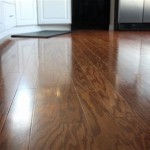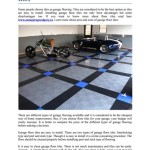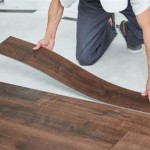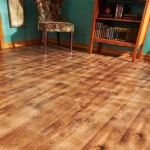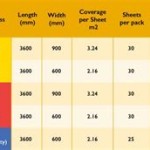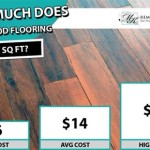How To Remove Sticky Substance From Hardwood Floors
Hardwood floors, renowned for their aesthetic appeal and durability, can unfortunately become marred by sticky substances. These substances, ranging from spilled food and beverages to adhesives and residues from cleaning products, can create unsightly and potentially damaging blemishes. Effectively removing these sticky deposits requires a methodical approach and the careful selection of cleaning agents and tools to avoid scratching or otherwise harming the wood finish.
The initial assessment of the sticky substance is crucial. Identifying the nature of the residue will inform the selection of the most appropriate removal method. For instance, a sugary spill might require a different approach than a hardened adhesive residue. Factors such as the type of hardwood flooring (e.g., oak, maple, cherry), the finish (e.g., polyurethane, varnish, oil-based), and the age of the floor should also be considered. Older floors with worn finishes may be more susceptible to damage and require greater caution during the cleaning process.
Before commencing any cleaning procedure, it is recommended to test the chosen cleaning solution on an inconspicuous area of the floor. This precautionary measure helps to ensure that the solution does not discolor, dull, or otherwise negatively affect the finish. A small, hidden corner or area under furniture is typically suitable for this test.
Key Point 1: Initial Cleaning with Warm Water and Mild Soap
The first line of attack against most sticky residues should involve warm water and a mild soap. This method is generally safe for most hardwood floors, provided that excessive moisture is avoided. A pH-neutral soap is preferable, as acidic or alkaline solutions can potentially damage the finish. Dish soap, diluted in warm water, is often an effective and readily available option.
The cleaning process involves dampening a soft cloth or mop with the soapy water solution. Wring out the cloth or mop thoroughly to prevent excess water from seeping into the wood. Gently wipe the affected area, applying light pressure to loosen the sticky substance. Avoid scrubbing aggressively, as this can scratch the finish. Repeat the process as needed, rinsing the cloth or mop frequently with clean water.
Following the application of the soapy water solution, it is essential to thoroughly dry the area with a clean, dry cloth. Residual moisture can lead to water spots or even warping of the wood over time. Pay particular attention to the seams between planks, where water can easily accumulate.
If the warm water and mild soap method proves ineffective, it may be necessary to escalate to more specialized cleaning solutions. However, it is crucial to proceed with caution and to test any new solutions in an inconspicuous area before applying them to the entire affected area.
Key Point 2: Utilizing Specialized Cleaning Solutions
When warm water and mild soap fail to remove the sticky substance, specialized cleaning solutions designed for hardwood floors may be considered. These solutions are formulated to effectively dissolve various types of residues without damaging the wood finish. It is imperative to carefully read and follow the manufacturer's instructions when using any specialized cleaning product. Some common options include:
Mineral Spirits: Mineral spirits, also known as paint thinner, can be effective for removing stubborn adhesives and oily residues. However, mineral spirits are flammable and should be used in a well-ventilated area. It is crucial to wear gloves and to avoid prolonged skin contact. Apply a small amount of mineral spirits to a clean cloth and gently wipe the affected area. Immediately wipe away any residue with a separate clean cloth.
Vinegar Solution: A diluted vinegar solution (typically one part white vinegar to ten parts water) can be effective for removing certain types of sticky residues, particularly those caused by sugary spills or hard water stains. Vinegar's mild acidity helps to break down these substances. However, it is important to use vinegar sparingly, as excessive acidity can dull the finish. After applying the vinegar solution, thoroughly dry the area with a clean cloth.
Rubbing Alcohol: Isopropyl alcohol, or rubbing alcohol, can be used to dissolve certain types of adhesives and inks. Dampen a cotton ball or cloth with rubbing alcohol and gently blot the affected area. Avoid rubbing vigorously, as this can spread the stain or damage the finish. As with other solvents, ensure adequate ventilation when using rubbing alcohol.
Commercial Hardwood Floor Cleaners: Numerous commercial hardwood floor cleaners are available on the market, specifically formulated to remove various types of stains and residues. These cleaners often contain a blend of solvents and surfactants designed to lift dirt and grime without damaging the finish. When selecting a commercial cleaner, it is crucial to choose a product that is specifically designed for the type of finish on the hardwood floor (e.g., polyurethane, oil-based). Always follow the manufacturer's instructions carefully.
Regardless of the cleaning solution used, it is essential to avoid prolonged soaking or excessive moisture. Prolonged exposure to moisture can cause swelling, warping, or discoloration of the wood.
Key Point 3: Employing Gentle Scraping and Heat Techniques
In cases where the sticky substance has hardened and become firmly adhered to the hardwood floor, gentle scraping or heat techniques may be necessary. However, these methods require extreme caution to avoid damaging the finish.
Gentle Scraping: A plastic scraper or putty knife can be used to gently scrape away hardened residue. Avoid using metal scrapers, as they can easily scratch the finish. Hold the scraper at a low angle and apply gentle pressure, working the edge of the scraper under the residue. If the residue is particularly stubborn, soften it first with warm water or a solvent before attempting to scrape it away.
Heat Application: A hairdryer or heat gun (set on a low setting) can be used to soften hardened adhesives or waxes. Direct the heat at the affected area for a short period, moving the heat source back and forth to avoid overheating the wood. Once the residue has softened, gently scrape it away with a plastic scraper. Be extremely cautious when using heat, as excessive heat can damage the finish or even cause the wood to warp.
After using either scraping or heat techniques, it is essential to clean the area thoroughly with a mild cleaning solution to remove any remaining residue. Follow up with a dry cloth to remove all traces of moisture.
Preventive measures can significantly reduce the occurrence of sticky substances on hardwood floors. Promptly cleaning up spills and messes is crucial. Using mats and rugs in high-traffic areas can help to protect the floor from dirt, debris, and spills. Regularly vacuuming or sweeping the floor will remove loose particles that can contribute to sticky buildup. Avoiding the use of harsh chemicals or abrasive cleaning agents will help to maintain the integrity of the finish.
If, despite these efforts, the sticky residue persists or the floor finish is damaged, consulting a professional hardwood floor cleaning or restoration service may be the best course of action. Professionals have the expertise and specialized equipment to safely and effectively remove stubborn residues and to repair or refinish damaged floors.
Properly maintaining hardwood floors will preserve their beauty and extend their lifespan. Understanding the appropriate cleaning methods and employing preventive measures is essential for keeping them free from sticky substances and other blemishes.

First Aid Remove Sticky Residue Simple Decorating Tips

How To Remove Glue From Wood Floors Pete S

4 Ways To Remove Adhesive From A Hardwood Floor Wikihow

How To Remove Sticky Residue From Hardwood Floors

Removing Glue Or Adhesive From Hardwood Floors The Speckled Goat

Removing Glue Or Adhesive From Hardwood Floors The Speckled Goat

4 Ways To Remove Adhesive From A Hardwood Floor Wikihow

First Aid Remove Sticky Residue Simple Decorating Tips

How To Remove Sticky Residue From Hardwood Floors

4 Reasons Your Floors Are Sticky And How To Fix Them
See Also

